Event
Rising in the Plate Shift: resist and flourish
Taiwan is an island born of collision, shaped by tectonic pressure and layered with cultural and emotional tensions. In this landscape of instability, emerging or flourishing is never an automatic process. It is a deliberate choice, an act of resilience, creation and presence.
Rising in the Plate Shift, curated by Hsin-Chien Huang (click here for the interview), presents five virtual reality works, two immersive projections and two video works that show how digital art is in great ferment and addresses cultural and social issues specific to the contemporary Taiwanese context: the importance of remembrance and memory, the transformation of cultural traditions and collective identity.
Art becomes an instrument of resistance and renewal, a voice emerging from geological faults, affirming that even on unstable ground life can still flourish.
Immersive Room
Seasons
Hsin-Chien Huang, 2025
“Seasons” uses the cyclical structure of solar terms, the ancient Chinese system that divides the year into 24 periods of about 15 days each, each characterized by specific natural phenomena and endowed with poetic names such as “Insect Awakening,” “Full Grains,” and “White Frost,” to recompose temporal continuity against modern disintegration. Where modernity fragments time into deadlines, notifications and linear productivity, the work proposes a return to organic cyclicity: time as breathing, not as arrow.
The collaboration between Huang’s digital painting and Xian Yang’s metaphorical poetry creates a synchronized experience where images and words fluidly evolve from one solar term to the next, allowing the audience to physically feel temporal changes through organic transitions. The work adapts this continental system to Taiwan’s island specificity, creating imagery that reconnects the island to its Chinese cultural roots through the rediscovery of natural time. The immersive installation invites us to lose track of the clock to rediscover the vital rhythm of the seasons, proposing a contemplative antidote to the temporal alienation of the digital age.

Digital Deities: The Spirit of Restoration
Leo Shun-Jen Tsai, Billy Yi-Chun Chang, Tzu-Chi Liu, Ke-Chen Lan, Chia-Hung Ho, 2025
This work blends artificial intelligence technology with the traditional iconography of Door Gods, protective deities who in Taiwanese culture are traditionally placed at doorways to ward off evil spirits, demons and bad luck, renewed every New Year’s Eve in a family purification ritual. The installation uses twin AI technology to merge the user’s face with that of the Door God, creating a personalized protective deity that faces the new threats of the digital age.
Digital Deities recognizes that while traditional threats (evil spirits, negative energies) persist, the contemporary era generates new vulnerabilities that require evolved spiritual protection: cyberbullying, digital identity theft, online manipulation, social isolation, information overload, existential anxieties related to climate change and geopolitical instability. The digital gateway becomes new sacred liminal space where the user can temporarily assume divine protective power, democratizing access to sacredness.
The work creates new myths appropriate to our digital age, narratives that give spiritual meaning to technology while maintaining the connection to ancestral wisdom through the preservation of traditional iconography, protective function and threshold ritual. It suggests that authentic spiritual protection lies not in form but in intention, allowing tradition to adapt and renew itself to serve contemporary needs without losing its transformative efficacy.
TSJ Art Restoration Introduction
Founded in 2013 by Leo Shun-Jen Tsai, TSJ Art Restoration is Taiwan’s foremost institution for art conservation and integrated storage solutions. From restoring masterpieces and heritage monuments to designing custom-built collection spaces, TSJ supports leading museums and galleries in Taiwan and abroad. Today, the team is expanding internationally—in Singapore, Hong Kong, and Southeast Asia—delivering comprehensive solutions that safeguard cultural heritage and create sustainable collection environments.
Saving Door Gods Programme Introduction
Saving Door Gods Programme (SDGP) Initiated by TSJ Art Restoration in 2021, the Saving Door Gods Programme is committed to preserving Taiwan’s cultural heritage and training the next generation of restoration professionals. It is the first platform in Taiwan to connect expert conservators, heritage institutions, corporate sponsors, and cultural authorities.
By creating a restoration-led collaborative model, SDGP addresses the urgent need for cultural sustainability. Through public-private collaboration, it fosters long-term value by merging professional expertise, funding resources, and public awareness—setting a new standard for responsible cultural stewardship.
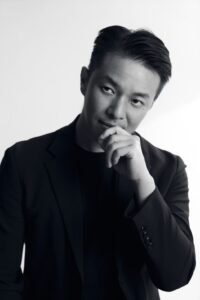
In photo: Leo Shun-Jen Tsai
Virtual Reality Artworks
Ekholux
Hsin-Chien Huang, 2025
The central metaphor of tectonic collision extends beyond the physical formation of Taiwan, embracing the cultural and technological pressures that continue to shape contemporary art practice. “Ekholux: The World of Recurrent Light” exemplifies this geological approach, functioning simultaneously as a digital archive and protective container.
The work stems from an awareness of Taiwan’s vulnerability: tensions with China, diplomatic isolation, and strategic location at the epicenter of global superpower rivalries. In this context of constant geopolitical threat, Huang recognizes that Taiwanese cultural identity is in danger of being erased or absorbed. Inspired by Duchamp’s “La Boîte-en-valise,” the artist creates what he calls a “digital ark”-a space where Taiwan’s creative spirit can survive the geopolitical tensions and cultural fragmentation that threaten the island’s identity.
Just as Noah’s Ark preserved biological diversity from the flood, “Ekholux” preserves Taiwanese cultural diversity from the destructive forces of contemporary history. The work thus becomes a deeply political artistic gesture: using digital technology to ensure cultural survival even in the face of concrete physical or political threats.
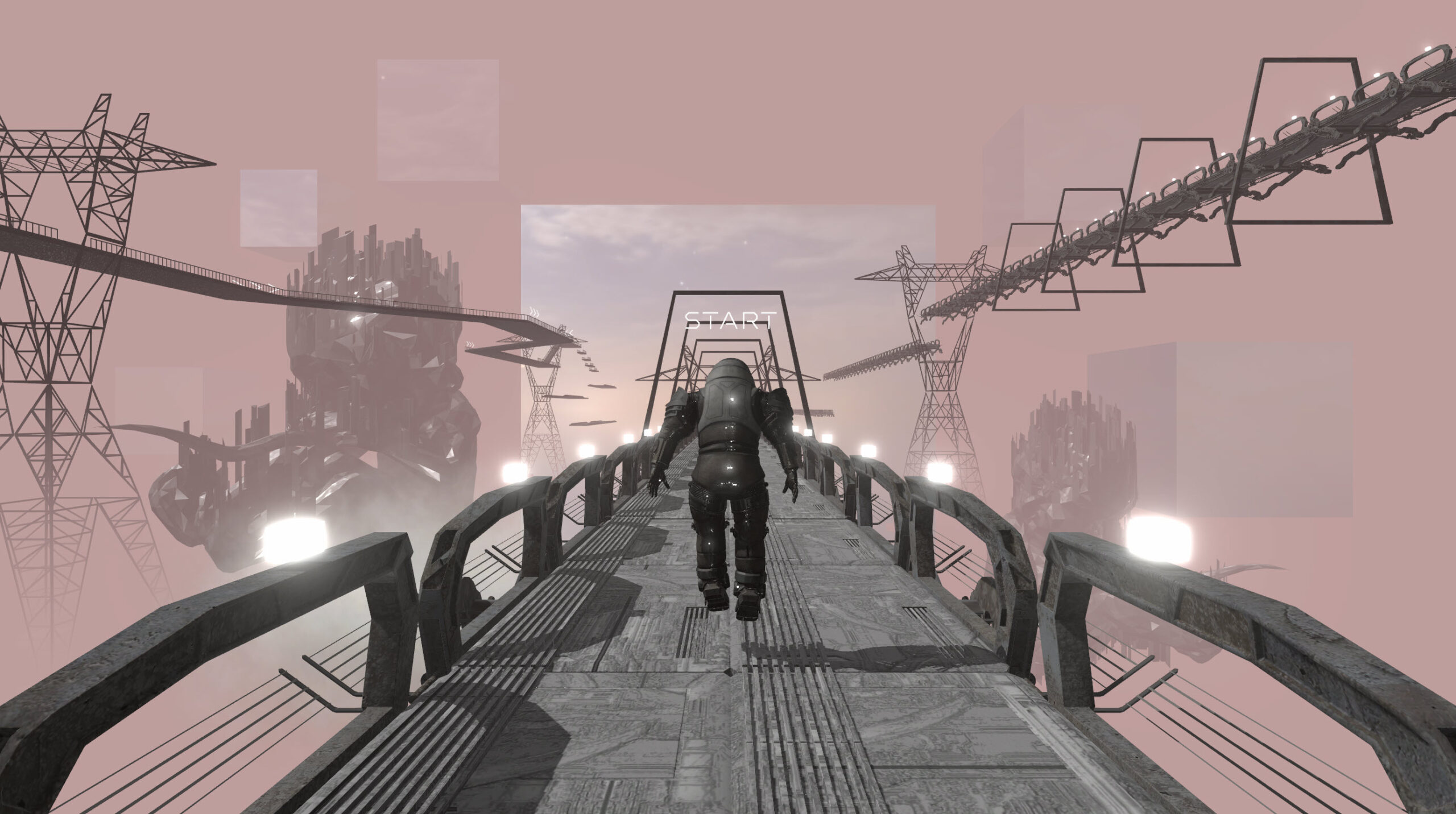
The Painted Horizon
Hsiao-Yue Tsao, Hua-Hsiang Chen, 2025
This work of memory retrieval is manifested differently in “The Painted Horizon,” where memory itself takes on a sedimentary character. The work delves into personal history through the figure of a fisherman from the Matsu Islands (a frontier archipelago off the coast of Taiwan), whose survival from shipwreck becomes the catalyst for a profound existential transformation: having abandoned fishing, the man turns to painting, transforming the traumatic experience of the sea into an artistic representation of the very seascapes that once threatened his life. Trauma here becomes the pressure that generates new forms of expression, reflecting the exhibition’s broader inquiry into how rupture can generate creative possibilities.
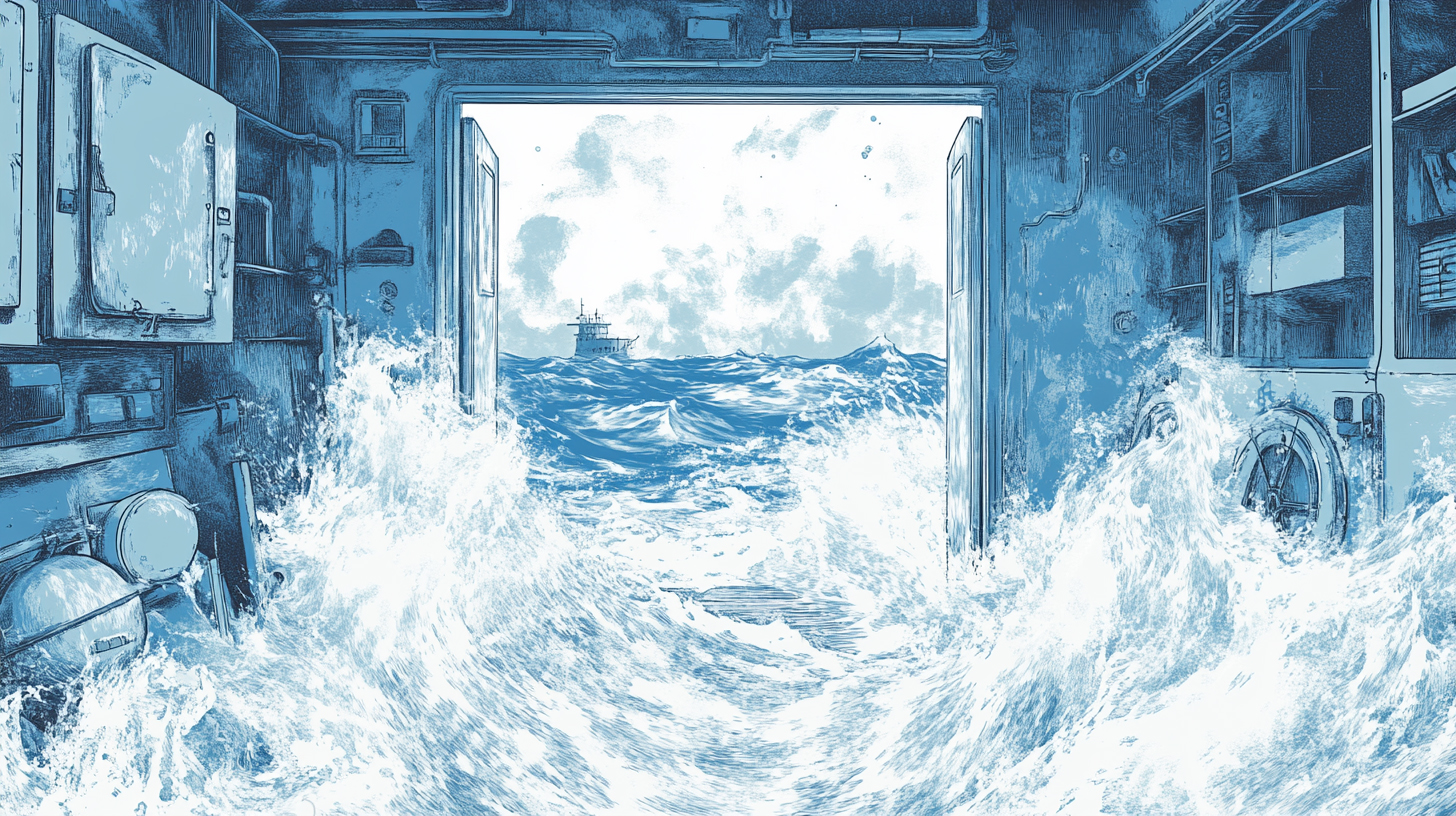
Imagine: When the world disconnects, what connects you?
Hsin-Chien Huang, Wen-Chieh Chang, 2025
This collaborative work positions art practice as a form of resistance to the loss of social and cultural ties and the fragmentation of collective identity. “Imagine” directly addresses the existential questions raised by growing alienation in our digital world: the paradox of being hyper-connected but emotionally isolated, of having access to endless information but losing the capacity for authentic relationships, of living in a global world but feeling profoundly alone. The play questions the audience about the very foundations of human connection in a time of climate crisis, geopolitical conflict, and social fragmentation, asking the fundamental question: what really connects us when everything seems to separate us?
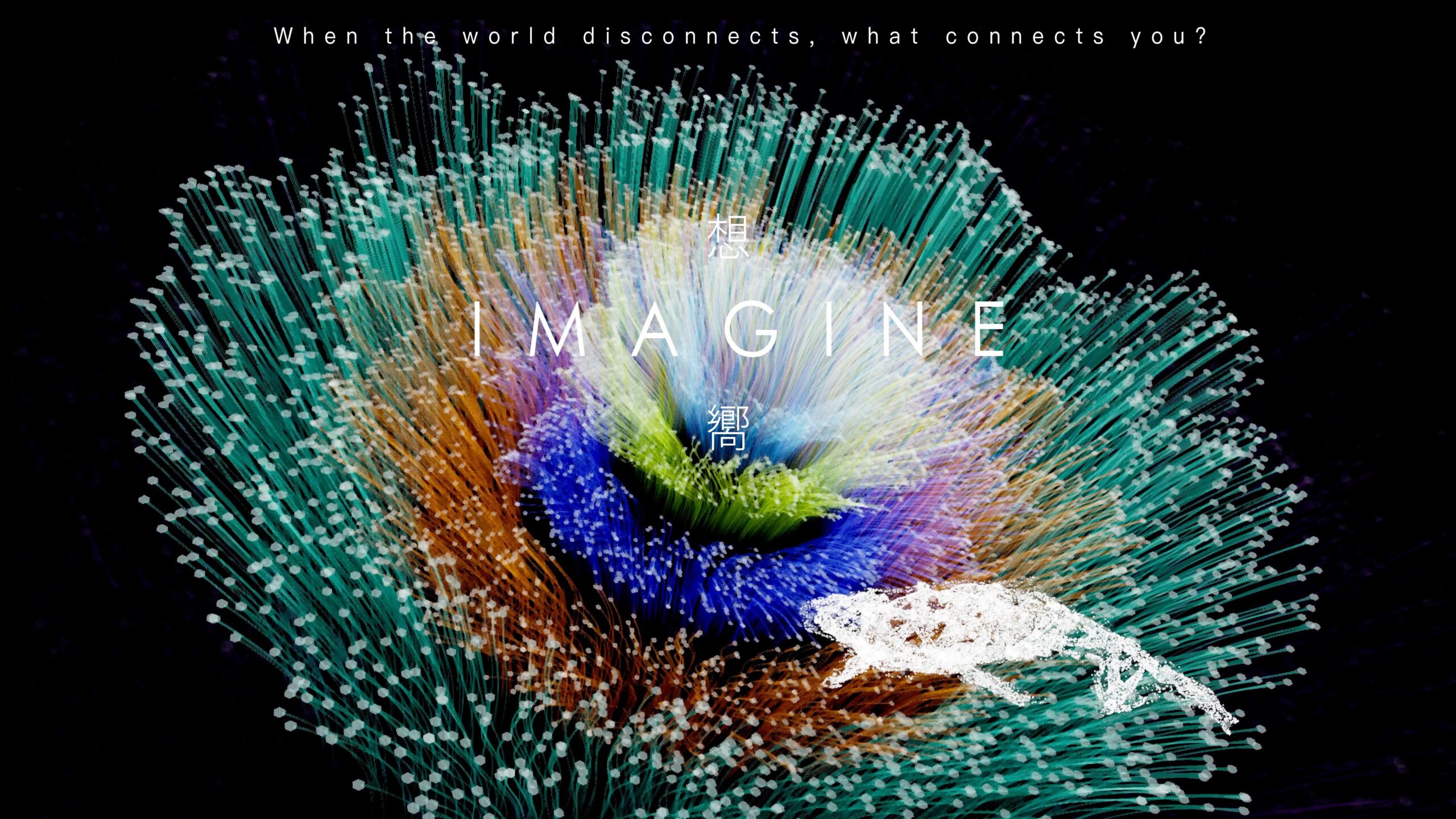
Wonder of Life
Wen-Chieh Chang, 2022
Chang’s work functions as a philosophical anchor, recognizing profound meaning in the most ephemeral natural phenomena – the veins of a lotus leaf, the momentary perch of a dragonfly, a scent fading in the air, the disappearing ripples of water. In a world that pushes toward fragmentation of attention, the work proposes a radical act of resistance: conscious contemplation. Attention itself becomes a form of resistance, a refusal to succumb to existential automatism, to desensitization caused by information overload. Chang suggests that stopping to observe the smallest and most transient details of nature is a revolutionary act against the loss of wonder and disconnection from the present that characterize the digital age.

Rice Dragon 360
Yu-Ting Hsueh, 2024
“Rice Dragon 360” is about the transformation of traditional spirituality in the most direct way, translating Hakka worship rituals in which white rice is traditionally scattered and shaped by the hands of worshippers on domestic altars to “draw” a telluric deity who grants fertility, into virtual space. The work addresses a philosophical question: can spiritual energy transmigrate from the physical to the digital while maintaining its transformative efficacy?
Replacing white rice with responsive digital particles implies not loss but metamorphosis; essential spiritual energy persists through material change. The ritual gesture of the hands remains central: the VR user directs and disperses the digital dragon through physical movements, maintaining the bodily interactivity that characterizes the original ritual. The cyclical dispersal and recomposition of the dragon symbolizes eternal death and rebirth, while the virtual space expands the domestic altar into an immersive environment where the divine presence can manifest itself in technological form. The work questions whether divinity can inhabit digital space with the same transformative power as traditional ritual, suggesting that authentic faith can adapt and renew itself through any medium that preserves sacred intention and communal involvement.
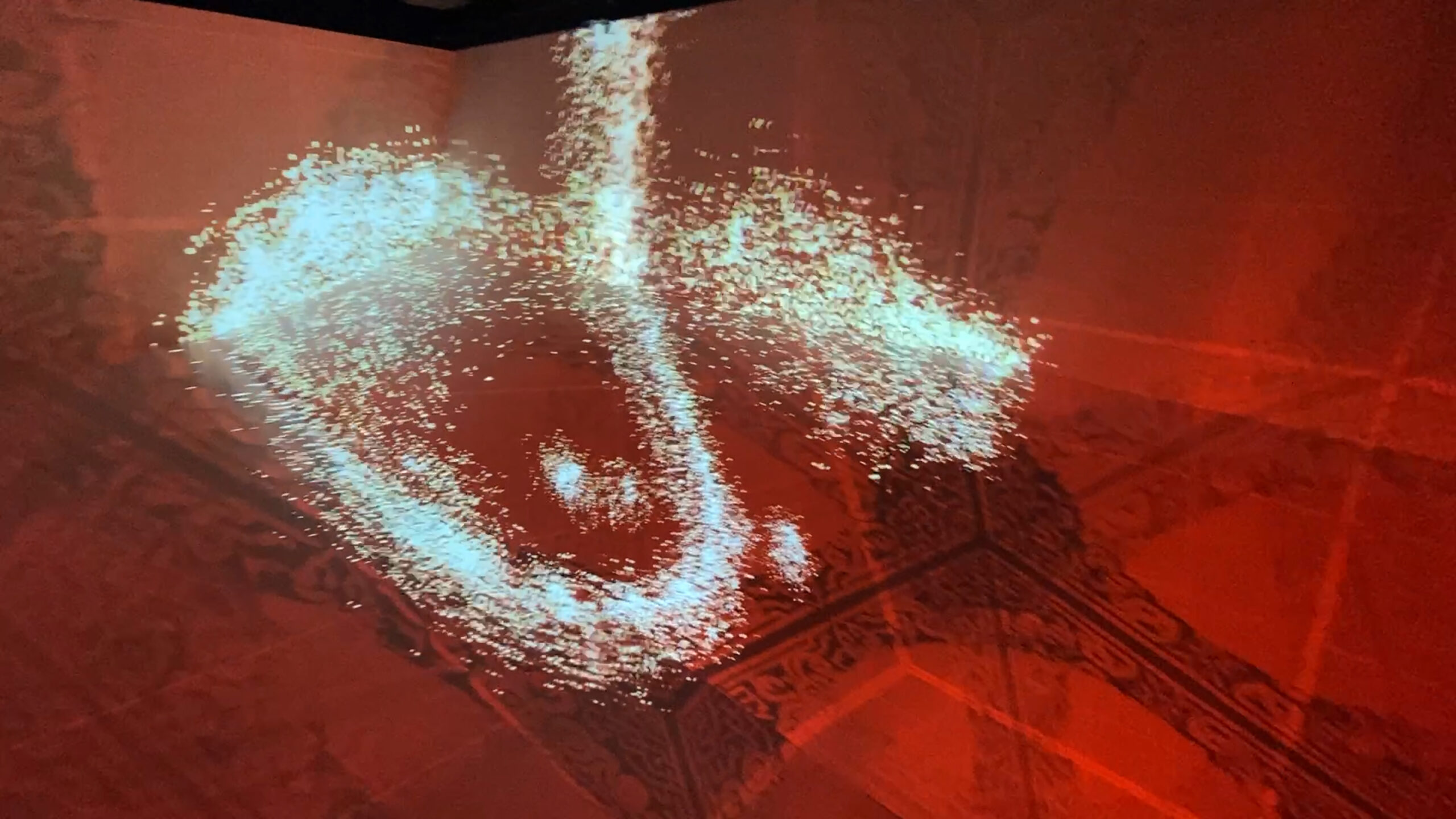
Video
Eternal Spring and Tiny Things
C.J. Sunny Yen, 2022
Yen’s watercolor animations define one of the extremes of the exhibition’s temporal scope. The pole of memory, of nostalgia, of natural biological time. Offering healing through a return to tactile intimacy lost in the digital age. Eternal Spring and Tiny Things is born from the hand-painting of each frame, a slow and meditative gesture that preserves the “warmth” of the manual creative act, then transformed by Phalanity Digital into immersive animation without losing the original craft essence.
The installation creates a miniature ecosystem where mice and butterflies gently interact among the flowers, symbolizing vulnerability and resilience in a perfect world where everything coexists peacefully. C.J. Sunny Yen transforms hand painting into an immersive experience that expands the two-dimensionality of paper into the three-dimensionality of the environment, allowing the audience to literally immerse themselves in a dream of tenderness and sensory serenity.
In an exhibition that explores the pressures of contemporaneity, “Eternal Spring and Tiny Things” proposes a therapeutic regression to a state of lost innocence, demonstrating that collective healing can occur through the rediscovery of simple and natural beauty, slow time, and delicacy as medicine for the soul.
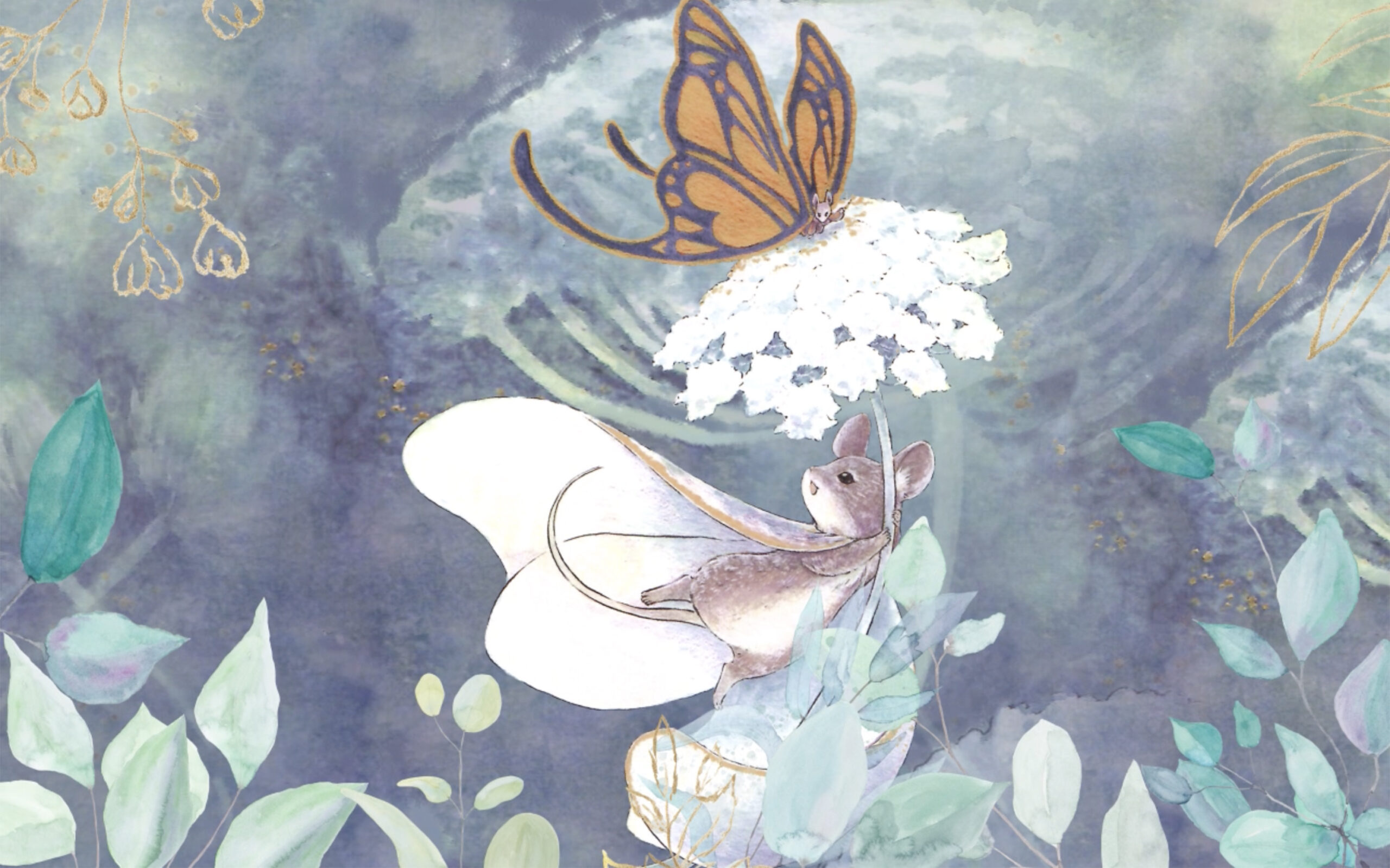
Subsistence Machines in Meta World
Che-Kuang Chuang, 2022
Chuang’s work defines the other temporal extreme, the pole of speculative future, technological prophecy, in direct dialectic with the organic nostalgia of “Eternal Spring and Tiny Things.” Where Yen proposes therapeutic regression toward tactile intimacy, Chuang projects toward a postphysical existence in the metaverse, imagining speculative machines that fulfill basic human needs-food, clothing, appearance, residence, transportation-in completely virtual spaces.
Subsistence Machines in Meta World suggests that the work of cultural preservation and transformation extends to both the memory past and the speculative future, asking crucial questions: how will human needs evolve when we live primarily in digital dimensions? What cultural traditions will survive in the metaverse? How will Taiwan position itself in the global digital economy? The machines of the metaverse prophesy new forms of survival and adaptation, creating a dialectical tension with the opposite extreme of the exhibition.
The temporal polarity between these two extremes, organic vs. digital, past vs. future, intimacy vs. mediation, defines the full arc of human experience that the exhibition embraces.

Rising in The Plate Shift
“Rising in the Plate Shift” demonstrates that Taiwan’s location at the intersection of multiple tectonic, geological, cultural and technological forces creates unique conditions for artistic innovation. The works collected here demonstrate how pressure can be transformed into new forms of beauty, meaning, and connection. They affirm that even in the most unstable circumstances, the choice to create, resist and flourish remains possible.
The exhibition positions new media art not as an escape from reality, but as a direct confrontation with it, demonstrating that digital technologies can serve as tools for cultural preservation, spiritual renewal, and imaginative resistance. In transforming pressure into presence, artists offer a model for navigating the fault lines of our time.
Advisors: Ministry of Culture, Department of Cultural Affairs Taipei City Government
Organizers: Metaverse Alliance, Virtual and Physical Media Integration Association of Taiwan
Partners: GIGABYTE, National Museum of Taiwan Literature, National Taiwan Normal University, Natural Kind Academy, NVIDIA, Trend Education Foundation, TSJ Art Restoration
Special Thanks: Ufficio di Rappresentanza di Taipei in Italia-Ufficio di Milano
